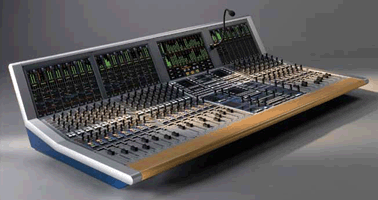Digital Snakes And Stageboxes Extend The Mix To Create More Complex Systems
Stagetec CRESCENDO
Recent digital audio product releases from three leading manufacturers demonstrate how digital snakes and stageboxes—using various transport protocols over copper and glass— have become essential components to any digital audio mixing setup. Whether an integral part of a console product or simply an adjunct to it, digital snakes and stageboxes not only extend the physical reach of a mixing rig but also expand it into a more complex system that additionally encompasses monitoring, recording, and other capabilities.
Roland Systems Group added two digital snake components at the end of last year that are based on the REAC (Roland Ethernet Audio Communication) protocol, which supports 40 bi-directional channels of 96 kHz/24 bit audio as well as Power over Ethernet (PoE) over Cat-5e. There is an optional ethernet/optical converter.
“What makes our solution unique is the ability for many different components to talk to each other, and for the integrator or user to add the pieces that they need at any particular time,” says John Broadhead, VP of technology for Roland Systems Group. The system offers a choice of consoles, of snake heads or stageboxes, personal monitoring solutions, and a multichannel recording component.
Each 48-channel console has 10 local inputs and accepts two REAC streams, a total of 90 inputs. Those are delivered over the modular S-4000 snake head/stagebox, the smaller S-1608/S-0816, or the new S-0808, which includes quarter-inch balanced inputs and may be PoE or, uniquely, battery powered. The new S-4000M combines any four snake heads into a single REAC stream, from which the 48 channels may be selected at the console or via remote control software.
The main I/O interface of the new Yamaha M7CL-48ES console is the 16 in, eight out SB168-ES remote stage box, which connects via a single Cat-5 cable and supports EtherSound. “You can rack them all together or you can spread them around the stage or your facility,” offered Yamaha Commercial’s mixer product manager, Kevin Kimmel. Three card slots allow interconnection via Yamaha’s MY interface cards with CobraNet, Aviom, and other devices.
Kimmel recommends Yamaha’s MY interface for the Audinate Dante network protocol to add recording capabilities: “It’s 16 channels [bidirectional]; you can go straight from that card into your computer. If you want more channels you can just put a switch inline.”
According to Tom Der, national sales manager for Soundcraft USA, the new compact 96-input, Vi2 console is designed for applications where space is at a premium. As with the rest of the Vi line it utilizes MADI over Cat-5, or single or multi-mode fiber. Inputs to the console’s eight faders are selected at the Vistonics control surface.
“The majority of the I/O resides at the stagebox,” Der explained. “It can be configured within the MADI limit of 64 in and out. You can replace an I/O card with an AES/EBU card, and you can connect Aviom or CobraNet or AES/EBU output cards.”
The company’s Si range will soon benefit from MADI implementation: “Down the road there will be a lower cost stagebox for the Si as well. There are expansion slots and if you add a MADI card you can have an optical MADI stagebox for the Vi range connected to it.”
Looking further into the future, Der said, “We’ll start using AVB as a way to communicate. I would say probably by the end of this calendar year I would expect there to be option cards that support ethernet AV for connecting the stageboxes and the console. AVB seems like it’s going to be open and widely accepted in both consumer and pro audio. Hopefully we’ll all come to live in an AVB world.”
